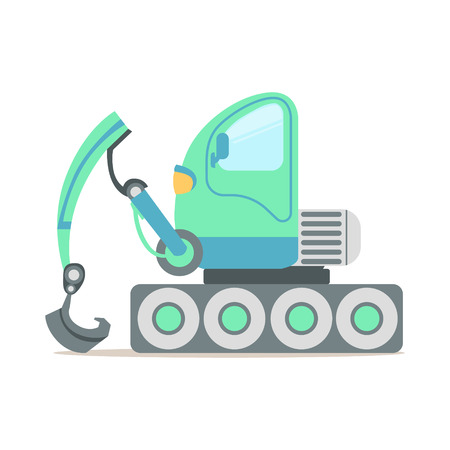Why Blade and Engine Maintenance Matters
If you want to get the most out of your lawn mower, regular cleaning and maintenance of both the blade and engine are essential. Over time, grass clippings, dirt, and debris can build up on the blade and within the engine components, causing decreased performance and even permanent damage. Dull blades tear rather than cut grass, leading to an uneven lawn and extra strain on your mower’s motor. Similarly, a neglected engine will run less efficiently, burn more fuel, and may eventually fail altogether. By keeping your lawn mower blade sharp and your engine clean, you not only extend the lifespan of your equipment but also ensure it runs smoothly each mowing season. This routine care saves you money in the long run by reducing repair costs and delaying the need for a new mower, while also helping you achieve that crisp, professional-looking lawn every homeowner wants.
2. Safety Precautions Before You Start
Before you roll up your sleeves and get to work on cleaning or maintaining your lawn mower’s blade and engine, it’s crucial to prioritize safety. Lawn mowers may look harmless when idle, but improper handling can lead to serious injuries. Here are the essential safety steps every homeowner should follow before starting any maintenance or cleaning.
Disconnecting the Spark Plug
One of the most important first steps is disconnecting the spark plug. This simple action prevents accidental engine startups while you’re working near the blade or engine components. To do this, locate the spark plug wire on your mower (usually a thick, rubber-coated wire), firmly grasp the boot, and pull it away from the spark plug tip. Never skip this step—it’s a basic precaution that can save fingers and prevent accidents.
Proper Protective Gear
Wearing the right gear helps protect you from sharp blades, debris, and harmful chemicals. Here’s a quick guide to what you should wear:
| Protective Gear | Purpose |
|---|---|
| Work Gloves | Protects hands from sharp edges and dirt |
| Safety Glasses | Keeps debris out of your eyes |
| Long Pants | Shields legs from cuts and scrapes |
| Closed-Toe Shoes | Guards feet against dropped tools or blades |
Additional Safety Tips
- Always work in a well-ventilated area to avoid inhaling fumes from fuel or cleaning agents.
- If your mower has been running, let it cool down before servicing to prevent burns.
- Keep children and pets away from your workspace for their safety.
Summary
Your safety is non-negotiable. By disconnecting the spark plug and wearing appropriate protective gear, you significantly reduce your risk of injury while cleaning or maintaining your lawn mower blade and engine. Remember, taking a few extra minutes for safety ensures that your DIY maintenance doesn’t end with a trip to the ER.

3. Cleaning Your Lawn Mower Blade
Step-by-Step Guide to Safe Blade Maintenance
Keeping your lawn mower blade clean and sharp is key to a healthy, even lawn. Here’s a simple step-by-step process to help you safely remove, clean, and sharpen your mower blade, while also checking for any signs of damage.
1. Disconnect the Spark Plug
Safety first! Always disconnect the spark plug wire before working on your mower to prevent accidental starts.
2. Tilt the Mower Correctly
Tilt the mower on its side with the air filter and carburetor facing up to avoid fuel or oil leaks. Make sure you’re working on a flat, stable surface.
3. Remove the Blade
Use a wrench to loosen the bolt holding the blade in place. If it’s tight, secure the blade with a block of wood for leverage. Remember which way the blade is installed so you can put it back correctly.
4. Clean Off Grass and Debris
Scrape off caked-on grass clippings and dirt using a putty knife or stiff brush. For stubborn grime, use warm soapy water and dry thoroughly to prevent rust.
5. Inspect for Damage
Check the blade for nicks, cracks, or bends. A damaged blade should be replaced rather than repaired—using a compromised blade can be dangerous and leave your lawn uneven.
6. Sharpen the Blade
If the blade is in good shape, sharpen it using a metal file or bench grinder. Follow the original angle of the cutting edge, and try to keep each side balanced for smooth mowing.
7. Reinstall Securely
Once cleaned and sharpened, reinstall the blade tightly in its original position. Reconnect the spark plug wire before starting your mower again.
Regularly cleaning and inspecting your lawn mower blade not only improves performance but also extends the life of your machine, giving you that crisp, all-American lawn look every summer.
4. Caring for the Engine
Maintaining your lawn mower’s engine is essential for smooth operation and long-term durability. Here’s a step-by-step guide to help you keep your mower’s engine in top shape.
Cleaning the Engine Exterior
Start by making sure the engine is turned off and completely cool. Use a dry cloth or soft brush to wipe away dirt, grass clippings, and debris from the engine housing, cooling fins, and around the spark plug. Avoid using water directly on the engine to prevent moisture damage or corrosion.
Checking for Debris
Inspect key areas where debris tends to collect, such as under the shroud, around the air intake, and near moving parts. Remove any accumulated grass, leaves, or twigs, as these can restrict airflow and cause overheating. Be sure to check around belts and pulleys as well.
Changing the Air Filter and Oil
Regularly changing the air filter and oil helps your mower run efficiently. Refer to your owner’s manual for specific intervals, but generally, these tasks should be performed at least once per mowing season or after 25 hours of use. Use the table below for a quick overview:
| Task | Frequency | Instructions |
|---|---|---|
| Change Air Filter | Every season or 25 hours | Remove cover, replace with new filter |
| Change Engine Oil | Every season or 25 hours | Drain old oil, refill with recommended oil type |
Tips for Oil Changes
- Warm up the engine for a few minutes before draining oil—it flows out more easily.
- Use a funnel when refilling oil to avoid spills.
- Dispose of used oil responsibly at a recycling center.
Pro Tip:
If your mower has a paper air filter, tap it gently to dislodge dust before replacement. For foam filters, wash with mild detergent, rinse thoroughly, let dry completely, and lightly oil before reinstalling.
5. Reassembly and Final Checks
Once your lawn mower blade and engine have been thoroughly cleaned and inspected, it’s time to put everything back together and make sure your mower is safe for use. Start by carefully reinstalling the blade. Align the blade with the spindle, ensuring that it is positioned exactly as it was before removal. Use a socket wrench to tighten the bolt securely; you want it snug but not over-tightened, as this could damage the threads or make future maintenance difficult. Most manufacturers recommend torquing the blade bolt to a specific value (usually between 30-60 ft-lbs)—check your owner’s manual for the exact specification.
Checking Blade Tightness
After tightening the blade, double-check that it sits flush against the mounting surface and doesn’t wobble. Give the blade a gentle wiggle to ensure there’s no play. A loose blade can cause serious vibration issues or even come off during operation, so this step is crucial for both performance and safety.
Inspecting Other Components
Before lowering your mower back onto its wheels, take a moment to inspect all fasteners, belts, and other moving parts you may have touched during cleaning. Make sure everything is properly secured and nothing has been left out of place. If you removed any covers or guards, reinstall them now.
Preparing for Safe Operation
Finally, reconnect the spark plug wire and return your mower to an upright position. Add fresh fuel if needed and check your oil level one more time. Give the pull cord a couple of gentle tugs (with the spark plug connected) to ensure smooth engine movement and listen for any unusual noises. Once satisfied, your lawn mower is ready for another season of reliable service—and you can mow with confidence knowing everything is in top shape.
6. Maintenance Tips to Keep Your Mower Running Smoothly
Keeping your lawn mower in top shape doesn’t have to be complicated—just a few straightforward habits will keep your machine running season after season. Here are practical, American homeowner–friendly tips for caring for your mower’s blade and engine throughout the year:
Seasonal Storage
As fall gives way to winter, it’s important to store your lawn mower properly. Before storing, run the engine until it’s out of fuel or add a fuel stabilizer to prevent the gas from going stale. Clean the deck, remove any grass buildup, and make sure the blade is free of moisture to avoid rust. Store your mower in a dry, sheltered spot like a garage or shed—never outdoors where it can be exposed to the elements.
Fuel Care
Old or contaminated fuel is one of the most common reasons mowers won’t start in spring. Always use fresh gasoline and consider ethanol-free blends if available in your area, as ethanol can attract moisture and lead to engine issues. If you’re not mowing for more than a month, either drain the tank or use a fuel stabilizer specifically designed for small engines.
Regular Inspection
Before each mowing season—and ideally every few uses—inspect your mower thoroughly. Check for loose or missing bolts, worn belts, and cracks in the blade or deck. Look at the air filter and spark plug; replace them if they appear dirty or worn out. Lubricate moving parts according to your owner’s manual and tighten any fasteners that may have loosened from vibration.
Sharpening and Balancing Blades
A dull or unbalanced blade tears grass instead of cutting it cleanly, stressing your lawn and causing engine strain. Sharpen blades at least once per mowing season (more often for large yards), and balance them by hanging on a nail or using a blade balancer—an uneven blade can damage the mower’s bearings over time.
Prolonging Your Mower’s Life
A little attention goes a long way: keep up with oil changes per manufacturer recommendations, use only recommended replacement parts, and clear debris after each mow. Following these easy steps will help ensure your lawn mower delivers reliable performance and a great-looking yard year after year.


